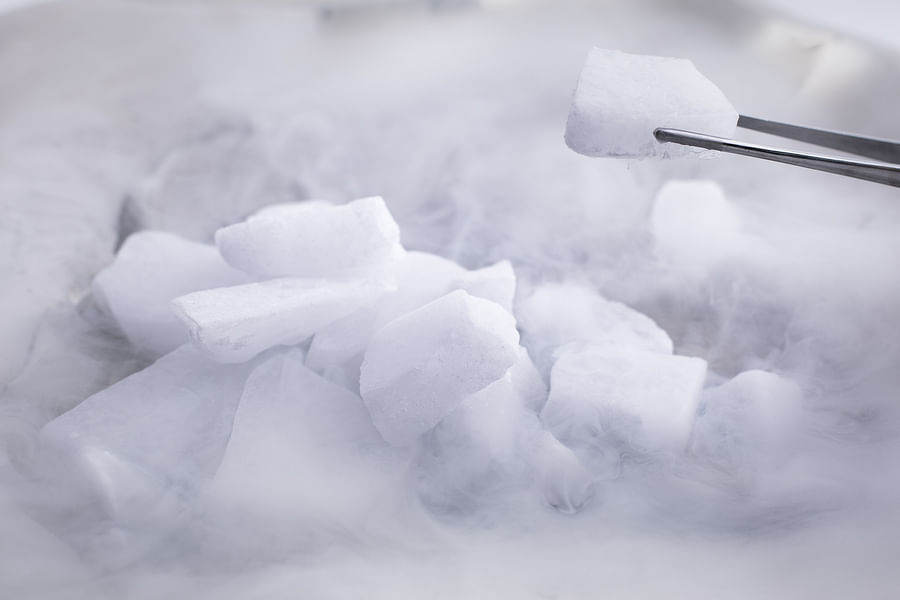Can You Eat Dry Ice? Debunking Myths and Understanding Risks

Have you ever watched in awe as dry ice sublimates, creating a mesmerizing misty spectacle, and wondered, can you eat dry ice? It's a question that has sparked many myths, some of which have gained surprising prevalence. The idea of consuming this fascinating substance is intriguing, but is it safe to eat dry ice? Or is dry ice dangerous to eat? Let's embark on a journey to debunk dry ice myths and understand the reality of this captivating compound.
From tales of icy treats to chilling challenges, the notion of swallowing dry ice has been circulated far and wide. But what happens if you eat dry ice? Is it just a harmless frosty indulgence, or are there serious dry ice eating risks involved? Is dry ice edible at all, or is it a dangerous dare best left untouched?
As we dive into the chilling depths of this topic, we'll explore the truth behind these questions, dispelling misconceptions and illuminating facts. By understanding dry ice, we can appreciate its wonders without falling prey to potentially harmful myths. So, are you ready to uncover the cold, hard truth about whether it's safe to eat dry ice? Let's get started!
Ever wondered what makes that eerie fog in haunted houses or the smoky swirl in your fancy cocktail? Welcome to the fascinating world of dry ice. Unlike the typical ice cubes chilling your lemonade, dry ice is the solid form of carbon dioxide. It's called 'dry' because it sublimates, meaning it transitions directly from a solid to a gas without passing through the liquid phase. This unique characteristic, explained in detail in our FAQ on dry ice and its uses, makes it a star in various applications.
From preserving perishable goods in transit, a role it plays as a game-changer in cold chain shipping, to creating special effects in theatres and films, to enhancing food presentation in gastronomy, dry ice is truly versatile. It's also a popular choice for deep cleaning, as it can effectively remove residues without leaving any waste, a process known as dry ice blasting. And let's not forget the thrill of conducting science experiments with dry ice - who wouldn't love to create a homemade comet or a bubble-filled ghost?
However, amidst all these exciting uses, one question often pops up: can you eat dry ice? It's a chilling thought, isn't it? But before we delve into that frosty debate, let's understand dry ice a little better. Remember, knowledge is your best defense against the potential risks of mishandling this frosty marvel. For more information on safe handling and storage, check out our guide on understanding dry ice burns and how to treat them.

Ever found yourself pondering the question, can you eat dry ice? Well, you're not alone. This common myth has been circulating for years, often misconstrued and misunderstood. Let's set the record straight: dry ice is not edible. Yes, you read that right. Consuming dry ice is not only unsafe, but it can also lead to serious health risks.
Why is this myth so prevalent, you ask? It may be due to the fascinating properties of dry ice. Its ability to sublimate - transition directly from a solid to a gas - can be misleading, leading some to believe it's safe to ingest. But remember, what's fascinating isn't always edible!
So, what happens if you eat dry ice? The extreme cold temperature of dry ice, which is -78.5 degrees Celsius or -109.3 degrees Fahrenheit, can cause significant damage to your mouth, throat, and digestive system. Swallowing dry ice can lead to frostbite-like injuries or worse, internal burns. Not exactly a pleasant dining experience, is it?
Understanding dry ice and debunking these myths is crucial to ensure safety. Dry ice is indeed a wonder of science, but it's not meant to be a part of your meal. So, the next time someone asks, can u eat dry ice, you know what to say - a resounding no!
To better understand why dry ice is not edible, let's take a look at this video that explains its unique properties.
As you can see, dry ice is indeed fascinating, but it is certainly not meant for consumption. Now that we've debunked the myth, let's delve into the dangers of consuming dry ice.
Have you ever wondered, can you eat dry ice? The short answer is a resounding no! Dry ice is not your typical ice cube. It's frozen carbon dioxide, with a chilling temperature of -78.5 degrees Celsius. When it comes into contact with your skin or mucous membranes, it can cause serious burns and injuries, similar to frostbite. To understand more about the differences between dry ice and regular ice, check out our FAQ on the difference between dry ice and wet ice.
Imagine this: You're at a party, and someone dares you to swallow a piece of dry ice. You might think it's harmless, a fun party trick. But the reality is far from it. When dry ice enters your mouth, it can cause instant frostbite, damaging your tongue, gums, and throat. If swallowed, the dry ice can cause severe internal burns and may lead to serious complications such as gastric perforation or asphyxiation.
But what happens if you eat dry ice unknowingly? It's a terrifying thought. The dry ice would start to sublimate, turning from a solid directly into a gas, expanding rapidly. This could lead to a sudden increase in pressure within your stomach or intestines, resulting in severe pain, vomiting, and in extreme cases, rupture of the stomach or intestines. For more information on the properties of dry ice and how it behaves, you can read our article on how to make dry ice at home.
So, is it safe to eat dry ice? Absolutely not! Debunking dry ice myths is crucial to understanding dry ice and its potential dangers. While it may seem like an exciting novelty, the risks of eating dry ice far outweigh any thrill. For more details on safety measures and precautions while handling dry ice, refer to our in-depth guide to buying and storing dry ice. Remember, safety first!
Now that we've unveiled the chilling truth about the dangers of consuming dry ice, let's switch gears and focus on how to safely handle this fascinating substance. Whether you're using dry ice for a science experiment, a Halloween party, or to keep your perishables cool, knowing how to handle it correctly is crucial.
First things first: always use protective gloves when handling dry ice. Why, you ask? Well, dry ice isn't like regular ice. It's frozen carbon dioxide and its extreme cold temperature can cause frostbite if it comes into direct contact with your skin. So, always remember: gloves on!
Next, let's talk storage. Dry ice should be kept in an insulated container, but never in a sealed one. Why not? Because as dry ice sublimates - that's science speak for turning from a solid directly into a gas - it expands. A sealed container won't allow for this expansion and could explode. So, keep that lid loose!
Lastly, never leave dry ice in a poorly ventilated area, especially not in a vehicle. As it sublimates, it releases carbon dioxide gas which can build up and cause difficulty breathing. So, always ensure there's plenty of fresh air around. For more information, check out our safety precautions when handling dry ice.
So, can you eat dry ice? Absolutely not! But with these safety tips, you can use it wisely and have some frosty fun. Remember, understanding dry ice is the key to safely enjoying its unique properties.

As we've journeyed through the chilling world of dry ice, we've debunked the myth that's been giving everyone the cold shoulder - can you eat dry ice? The answer is a resounding no. Dry ice isn't a popsicle or a frosty treat. It's a substance that demands respect and careful handling. If you're wondering what is dry ice and what are its uses, it's important to know that it has countless applications beyond being a frosty treat.
When we ask, is dry ice dangerous to eat?, we're not just blowing cold air. Swallowing dry ice can lead to serious injuries, even frostbite in your mouth and digestive tract. It's a risk not worth taking.
We've also explored the question, what happens if you eat dry ice? The answer is as chilling as the substance itself. Dry ice sublimates, turning from a solid directly into a gas, which can lead to dangerous situations if ingested. If you're curious about the properties of dry ice, you might find it interesting to know does dry ice melt faster than regular ice.
Understanding dry ice is key. It's not a villain, but it's not edible either. It's a useful tool with countless applications, from preserving food to creating fog effects. If you're interested in the latter, you might want to check out this comprehensive review and buying guide for dry ice fog machines. The key is to handle it safely and responsibly.
So, next time someone asks, is dry ice safe to eat?, you'll be able to debunk the myth with confidence and knowledge. If you're looking for more information on how to handle dry ice safely, you might want to read about some practical uses for dry ice. Remember, dry ice is cool, but eating it is definitely not.
Test your knowledge about the safety and facts of dry ice. Let's see how much you've learned from the article!
Learn more about 🧪 Dry Ice Safety and Facts Quiz or discover other Dry Icy quizzes.
Let's see how many of our readers have heard about or believed in the myth of eating dry ice. Also, share with us any other dry ice myths you know, and how you learned to handle dry ice safely.
Post a comment